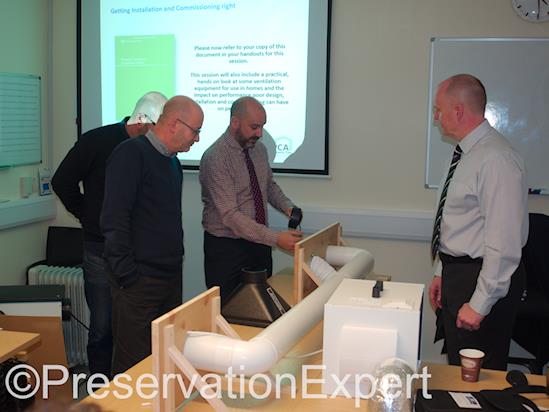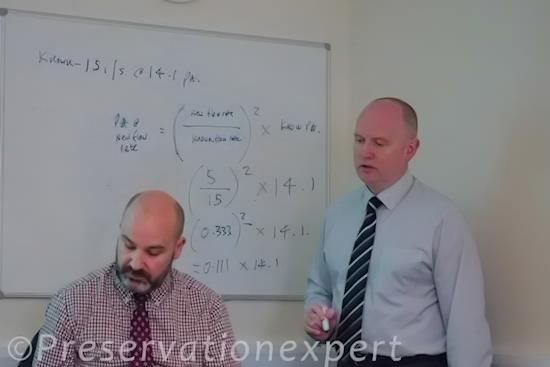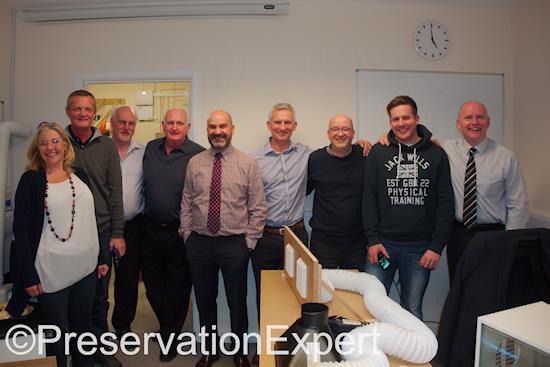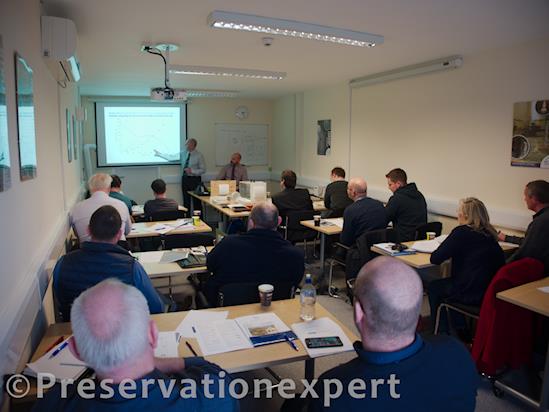Extra knowledge of domestic ventilation via PCA
Last year I posted a review of the Bpec domestic ventilation engineers course. Now, after a year putting these skills to good use, I’ve been able to add further knowledge, via the new Residential Ventilation Masterclass, run by the Property Care Association.
PCA members and many residential surveyors, who are not in the PCA have a slightly different outlook to the average bpec qualified plumber or electrician. Of course installation and commissioning of domestic ventilation systems is usually carried out by these guys, however as surveyors we are usually called in due to a damp problem, or a case of excess mould growth.
Contractors like me need to give clients the very best advice. This means being up to date on all of the current and upcoming domestic ventilation strategies.
The course was provided by PCA with presentation by John Bradley and Paul Harrington of the ELTA Group Limited. John and Paul have years of experience and a great deal of knowledge and skill to pass on in just one day, so of course this course was considered a ‘masterclass’ designed for those with some knowledge and experience of the internal environment; ventilation and dampness in general. We now live in homes which are very poorly ventilated, yet we produce vastly more water vapour than our grandparents ever did – ventilation is crucial and this course was all about understanding this.
I was joined on the course with a healthy number of PCA contractors, surveyors and consultant members, along with non member RICS surveyors too.
The course covered basic psychrometrics first, before John and Paul got into Part F of the building regulations (Means of ventilation), Part B (fire safety) and Part L1 (conservation of fuel and power). All these cross reference with regards to mechanical ventilation and John’s deep understanding of these issues really stood out and helped us focus on the most pertinent parts for our clients.
Those involved in basements conversions in particular were stunned to learn that all habitable rooms must have sufficient purge ventilation, which is calculated at 4ACH (air changes per hour). This means that most basements need very efficient and well specified mechanical ventilation – a few vents here and there are nowhere near sufficient, yet we see this many times. This was of course mentioned in the bpec course. However, the bpec is tested now by examination (multiple choice), and needs to skip through a lot of data, which is memorised for the test. There is no time to treat parts as more or less interesting than others; The residential ventilation masterclass, was able to focus more of the surveyors view – as professionals involved not only in fitting fans, but in changing buildings, which of course changes the ventilation environment and always has consequences – both for the building, the tenants and the installer/specifyer.

Paul made up a real scenario for us to test and then engender some defects and test the flow rate changes.
I was particularly interested in John and Pauls expert knowledge of commissioning and air flow testing. In fact I have saved over £2500, which I’d budgeted for a specialised type of self-calibrating bolometer, which I now know I don’t need – thank you guys! My trusty Testo calibrated anemometer and calibrated hood is sufficient, in the right hands….
In addition to this, we were able to make practical assessment of air flow through ducts, vent grills and other parts, both by pre-calculation and then testing after, to see how close we were to the actual flow rates – this was a real eye-opener and well worth the course fee on it’s own.

Some simple maths and we could skilfully choose the right fan for the right duct length, diameter and the number of bends… plus much more. Excellent!
There was also time to look at some examples of bad-practice, from real homes, ranging from defective ducts to dangerous fittings and short circuited ventilation pathways.
I’d recommend the Residential Ventilation Masterclass to anyone who need to advise clients on existing ventilation system or specify new systems. Domestic surveyors are becoming increasingly responsible for situations where homeowners complain of mould or dampness, derived from excess humidity. A moisture meter will not usually pick-up the transient residual moisture from condensate, so being able to see whether a home is susceptible to these issues, just by the number of bedrooms, construction and existing ventilation is useful stuff.
For those new to humidity measurement and the indoor environment I’d recommend the PCA’s excellent ‘condensation workshop’ as a good start, followed by this residential ventilation masterclass. I’ve written on the bpec course before and that too is a great way to get to grips with this stuff.

